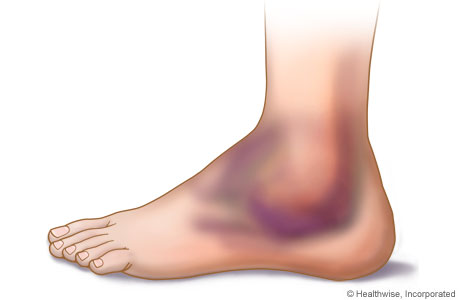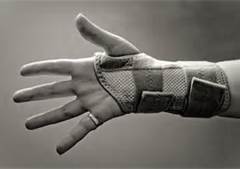 Swelling is a common, yet rarely diagnosed, underlying cause of much physical discomfort. It is not something that gets photographed in X-rays, MRI’s or CAT scans and as such, remains an invisible, untreated culprit. Unresolved swelling can lead to serious issues in the joints as well as in the digestive organs, and can severely damage the brain. The effects of swelling on different parts of the body is a huge topic with many ramifications, so for the purpose of this blog I’m going to stick with swelling in the joints, which is something I have dealt with often in my 30 years of practice.
Swelling is a common, yet rarely diagnosed, underlying cause of much physical discomfort. It is not something that gets photographed in X-rays, MRI’s or CAT scans and as such, remains an invisible, untreated culprit. Unresolved swelling can lead to serious issues in the joints as well as in the digestive organs, and can severely damage the brain. The effects of swelling on different parts of the body is a huge topic with many ramifications, so for the purpose of this blog I’m going to stick with swelling in the joints, which is something I have dealt with often in my 30 years of practice.
As a rule, any time you add swelling to a joint there’s trouble, as swelling creates immobility. With immobility in the joint you get a pattern of compensation. The foot and ankle provide a very clear example. Often, an individual experiences a slight amount of swelling in the ankle, of which they are unaware, which causes some discomfort. Then, without realizing it, they start to decrease their range of movement in the ankle joint, to avoid the discomfort, causing the calf to tighten. This tightened calf then exacerbates the problem in the ankle, resulting in a further reduction in its range of motion.
Imagine if you hurt your wrist and it starts to swell, and then you don’t move it. Well, there’s a certain amount of swelling that will stay there. So now you’re better at not moving your wrist. We know that this will eventually lead to some low-grade calcification. Now you have a calcified, swollen, painful wrist that can’t move and it begs the question; won’t moving help it? If immobilization promotes the problem than mobilization negates it. And there’s nothing swollen that wouldn’t prefer the circulation that movement creates.
If you ever try to move around the wrist of someone who has carpal tunnel syndrome, it doesn’t move very well. Again the correlations  are obvious. Movement vs. non-movement. There shouldn’t be any disagreements about that – but there are. A standard treatment for CTS is a wrist brace that decreases motion in the wrist. In my mind, this is a suitable short-term treatment, but doesn’t make any sense as a long-term solution.
are obvious. Movement vs. non-movement. There shouldn’t be any disagreements about that – but there are. A standard treatment for CTS is a wrist brace that decreases motion in the wrist. In my mind, this is a suitable short-term treatment, but doesn’t make any sense as a long-term solution.
In general, with joints and range of movement, it’s either going to decrease as we get older, or we can maintain it. We can’t improve it. And a lot of times, the beginning of this decrease in movement starts with low grade swelling, which causes pain and tightness, which in turn supports immobility. We could go through knee joints and hip joints and vertebrae and shoulders. It’s really deep and the affects vary depending on the location. I’ve gone into great depth on how swelling affects the thumbs and wrists already.
Basically, any time something is hurt there’s going to be swelling. Similar to the white blood cell response to fever, swelling is the body’s stress response to physical insult. The initial swelling is to be expected and is not a concern. The real problem arises, however, when the swelling doesn’t leave the affected joint. Swelling can often be in existence at a low-grade level for a long time without an individual’s knowledge. Especially in the feet and ankles and hands and thumbs.
In treating a fresh injury, let’s use the ankle as an example once more, I wrap the joint very tightly, to protect the area and inhibit swelling. After two or three days, however, treatment takes a 180-degree turn and I strongly emphasis movement of the joint. Movement is vital for a couple of reasons. The first being that movement promotes circulation and circulation counters swelling. The second reason is to prevent atrophy. Especially with people over 40.
This approach is quite different from the standard AMA approach to treating injured joints. They typically recommend immobilizing the joint for weeks to allow it to heal. But me, I’m a mover. After a couple of days the value of moving the joint far out weighs any benefits of not moving it.
 The long and short of it is that the easiest way to resolve low grade swelling in the ankle, which is more common than people realize, is actually by walking into a full range of motion and that mobility will diminish the swelling. It’s often that simple, but we tend not to want to mobilize areas that are uncomfortable.
The long and short of it is that the easiest way to resolve low grade swelling in the ankle, which is more common than people realize, is actually by walking into a full range of motion and that mobility will diminish the swelling. It’s often that simple, but we tend not to want to mobilize areas that are uncomfortable.
Mobilizing the area and returning to normal physical activity, along with stretching and massage will help to decrease swelling, improve circulation and enhance range of motion. And, fortunately, at Dorfman Kinesiology, we are experts in stretching and massage. Particularly as a means to injury rehabilitation and recovery. If you are experiencing discomfort or decreased range of motion in your ankles or any other joints, contact us for an appointment today. Increase your range of motion, enhance circulation, reduce swelling and you will feel better forever.
